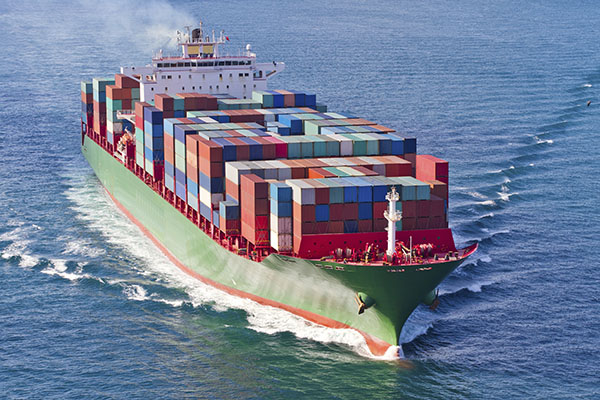Although international shipping is critical to global trade, cargo ships are a major source of air pollution, including greenhouse gas emissions. At present, atmospheric emissions from fuel oil-powered marine ships include sulfur oxides (SOx), nitrogen oxides (NOx), particulate matter (PM), and carbon dioxide (CO2). According to the International Maritime Organization (IMO), the United Nations agency responsible for preventing air pollution by ships, maritime shipping is responsible for 18 to 30 percent of NOx, 9 percent of SOx, and 3.5 to 4 percent of CO2 emissions worldwide. In addition, the maritime risk management and environmental assessment organization RightShip projects that if no abatement action is taken, global CO2 emissions may increase 50 to 250 percent by 2050 because of shipping growth. In April 2018, the IMO adopted a non-binding agreement to reduce CO2 emissions. Suggested carbon reduction strategies include improving fuel quality and engine emission standards as well as using new technologies, such as fuel cells, biofuels, and advanced sail design. See also: Air pollution; Biosynthesis of fuels; Carbon dioxide; Fuel oil; Nitrogen oxides; Ship powering, maneuvering, and seakeeping

The use of hydrogen fuel cells, in particular, shows great promise in decreasing ship-generated carbon emissions. Fuel cells convert chemical fuel into direct-current electrical energy, usually by combining hydrogen and oxygen and emitting water vapor and heat. When the hydrogen is produced using a natural energy source, such as solar energy, wind power, or biomass, fuel cells produce very low CO2 emissions. However, if the hydrogen used in fuel cells is derived from non-renewable natural gas or petroleum, then CO2 emissions (from hydrogen production) may exceed diesel-fueled propulsion systems. Hydrogen fuel cells have never been used for ship propulsion. Still, this did not stop Sandia National Laboratories from initiating a feasibility study for a high-speed passenger ferry powered by hydrogen fuel cells, called the San Francisco Bay Renewable Energy Electric vessel with Zero Emissions (SF-BREEZE). Sandia not only determined that such a vessel was feasible, the company also determined that by using renewable hydrogen, CO2 emissions would be reduced by 75.6 percent, NOx by 99.2 percent, and PM by 98.6 percent. Compared to a diesel-powered ferry, the cost of building a fuel-cell ferry would be about three times greater. See also: Energy sources; Fuel cell; Hydrogen
For cost optimization as well as proof of concept, a somewhat pared-down fuel-cell ferry called the Water-Go-Round is being built. The Water-Go-Round will be 21 meters (70 feet) in length and carry 84 people. When it launches in the fall of 2019, the Water-Go-Round will be the first fuel-cell ferry built in the United States. Passenger service in the San Francisco Bay area is expected to begin after a three-month testing period. To solve the hydrogen infrastructure issue, the ferry will be fueled from a truck. If this project is successful, hydrogen fuel cells might ultimately be used to power new—or fitted in old—ferries, tugboats, cruise ships, and cargo vessels. See also: Cruise ships; Ferry; Merchant ship; Ship design; Tugboats





